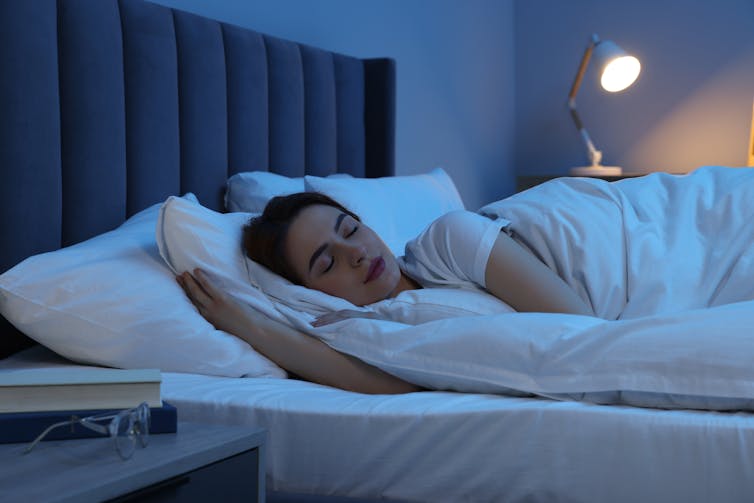Back in 2010, Gary Wolff, then editor of Wired magazine, gave a TED talk in Cannes called “The Quantitative Self.” It was about what he called a “new fad” among technology enthusiasts. These early adopters are using the gadgets to monitor everything from their physiological data to their mood, and even the number of nappies their babies have used.
Wolff acknowledged that those people were out there—attracted by information from tech geeks—but their behavior has since permeated mainstream culture.
From smartwatches that track our steps and heart rate, to fitness bands that record sleep patterns and calories burned, these devices are everywhere now. Their popularity is indicative of the modern obsession with quantification—the idea that if something isn’t recorded, it doesn’t count.
At least half of the people in every room are likely wearing a device, such as a fitness tracker, that measures some aspect of their life. Wearables are being implemented at a pace reminiscent of the cell phone boom of the late 2000s.
However, the measured self movement still faces an important question: Can wearable devices really measure what they claim?
With my colleagues Maximus Baldwin, Alison Keogh, Brian Caulfield and Rob Argent, I recently published an umbrella review (Systematic Reviews of Systematic Reviews) examining the scientific literature on whether consumer wearable devices can measure accuracy. Such as heart rate, aerobic capacity, energy expenditure, sleep and step count.
On the surface, our results were very positive. Allowing for some error, wearable devices can measure heart rate with an error of plus or minus 3%, depending on factors such as skin tone, exercise intensity and type of activity. They can accurately measure heart rate variability and show good sensitivity and specificity for detecting arrhythmia, a problem with a person’s heart rhythm.
Additionally, they can accurately predict what is known as cardiorespiratory fitness, which is how well the circulatory and respiratory systems deliver oxygen to the muscles during physical activity. This can be measured by something called VO2Max, which is how much oxygen your body uses during exercise.
Wearables are best suited for accurate measurements when these predictions are made during exercise (rather than at rest). In the area of physical activity, wearables generally reduce the number of steps, by about 9%.
A challenging endeavor
However, the differences were larger for energy expenditure (the number of calories you burn while exercising) with a margin of error ranging from −21.27% to 14.76%, depending on the device used and the activity performed.
The results were not very good for sleep. Wearables overestimate total sleep time and sleep efficiency, typically by more than 10%. They also underestimate sleep onset latency (delay in falling asleep) and waking after sleep onset. Errors ranged from 12% to 180%, compared to the gold standard measurement used in sleep studies, known as polysomnography.

New Africa / Shutterstock
The result is that despite the potential of wearables, we found that conducting and synthesizing research in this area is very challenging. One obstacle we encountered was the inconsistent methods employed by different research groups when validating a given instrument.
This lack of standardization leads to inconsistent results and makes it difficult to draw accurate conclusions about the accuracy of the instrument. A classic example from our research: one study may assess heart rate accuracy during high-intensity interval training, while another focuses on sedentary activities, leading to differences that cannot be easily reconciled.
Other issues include different sample sizes, participant demographics, and experimental conditions—all of which add layers of complexity to interpreting our findings.
What does this mean for me?
Perhaps most importantly, the rapid pace at which new wearable devices are released exacerbates these issues. With most companies following an annual release cycle, we and other researchers find this challenge difficult to maintain. The timeline for planning a study, obtaining ethical approval, recruiting and testing participants, analyzing results, and publishing can often exceed 12 months.
By the time a study is published, the device under investigation is likely already obsolete, replaced by a new model with potentially different features and performance characteristics. This is demonstrated by our findings that less than 5% of consumer wearables published to date have been validated for the range of physiological signals they measure.
What do our results mean for you? As wearable technology continues to permeate various aspects of health and lifestyle, it is important to approach manufacturers’ claims with a healthy dose of skepticism. Inadequacies in research, inconsistent methods and the rapid pace of dissemination of new instruments highlight the need for a more formal and standardized approach to instrument validation.
The goal here will be to create collaborative synergies between official certification bodies, academic research consortia, popular media influencers and industry so that we can improve the depth and reach of wearable technology assessments.
Efforts are already underway to create collaborative networks that can create a rich, multifaceted dialogue that resonates with a wide range of stakeholders—ensuring that wearables are not just innovative tools, but health and well-being. are reliable tools for
#accurate #wearable #fitness #trackers